I guess it’s somewhat odd of me to identify any individual arc from a status quo upheaval as polarizing as “Brand New Day” as being controversial in its own right, but I do believe the “Peter Parker Paparazzi” storyline as featured in Amazing Spider-Man #559-561 (written by Dan Slott with art from one of my all-time faves, Marcos Martin) is probably the most controversial one from this run of comics. I’m starting off with that sentiment because I’m anticipating that with all the pushback I’ve already received for praising elements of “Brand New Day,” the hate mail/tweets/Facebook posts are really going to come in once people are done reading this post.
I’m not going to lie – I really enjoyed “Peter Parker, Paparazzi,” and I would go as far as to say it’s probably one of the very best Slott stories from the multi-writer “braintrust” period, and even can stand toe-to-toe to some of the better ones he’s written post-“Big Time.”
For those of you still reading this post, you probably just notice that your web surfing experience on Chasing Amazing just got drastically got better. That’s because a whole bunch of bandwidth was freed up by outraged “former” readers jumping ship from my site for liking a story that really pushes the limits of Peter’s more universally accepted “characterization.”
For me, there’s a very fine line between a writer being provocative with his character choices and writer being completely tone deaf and ignorant of a character’s history/personality. There were elements of “Spider-Verse” and “Goblin Nation” where I felt that Slott unquestionably exhibited the latter, but “Peter Parker, Paparazzi” is definitely more of the “provocative” variety. It tap dances on that line – so much so that as I was rereading it for this post, I had a moment where I put my iPad down and thought long and hard about whether or not Peter would actually do the things that he’s doing in this story. And after weighing the possibilities and circumstances in my head, I’ve come to the conclusion, that yes, I can see Peter doing this stuff, which is why I’m a fan of this arc.
Let it be said that having an artistic genius on the level of Martin working on your story helps tremendously too. His depiction of Peter is just so expressive and captures so much of the internal/personality conflict of this story that I’m pretty sure I buy into this story as much as I do because of the artwork. But Slott’s script is what ultimately brings it home for me. It’s a good script, with a really cool premise, and a new villain introduction that is quite odd and unique but captivating all the same.
So, for those who are sitting there scratching your heads as to what I’m cryptically alluding to (keep in mind, you’re the people who are still here reading this post, so you either liked this story too, or you just don’t remember it), “Peter Parker, Paparazzi” deals with the idea of how far Peter would push himself morally at a desperate moment. He’s struggling to make ends meet as a photographer at the DB, which is now under the rule of Dexter Bennett – another newspaper villain who is similar to J. Jonah Jameson, but also comes across as being far more pathological and shady in his presentation of the news – and is offered a gig as a scummy paparazzi photographer, stalking a moviestar named Bobby Carr. Peter’s underhanded quest to nab photos of Carr with his mystery girl (who turns out to be Mary Jane Watson in her first appearance since the marriage wipe in “One More Day”) has him crossing paths with a terrifyingly bizarre villain, Paperdoll. Paperdoll is flat as a pancake and kills her adversaries (who are all people who have “wronged” Carr in some way) by smothering them and flattening them (thus shrinking their lungs and suffocating them).
Paperdoll, despite her waify appearance, is my kind of a villain – someone who is complicated and not indisputably evil. She kills people, which is obviously bad, but she’s a person who is clearly not right in the mind, in large part because of the power, we, as a society, place on the status of celebrity. In her mind, she loves Carr and would do anything to protect him, even if that involves her murdering his potential oppressors. But she’s also somebody who is capable of emoting sympathy from the reader. It’s not entirely her fault that she is the way she is. Add in the fact that it was her father’s invention that flattened her, thus turning her into a freak (but not the Freak), and she’s even more sympathetic.
Still, Paperdoll and her backstory is not what makes this storyline controversial. Going back and skimming what some people wrote about “Peter Parker, Paparazzi” when it first came out (and are still saying about the story), a lot of the focus seems to be on how creepy Slott made Peter. During his short stint as a paparazzi photographer, Peter crossed a number of lines of decency, invading a guys privacy all to make a buck. As more and more people chastised Peter for his behavior – Aunt May, Joe “Robbie” Robertson at the DB, Harry Osborn – Peter pushed back by saying nobody was getting hurt by his photography. And when others at the DB are so fed up with Bennett that the quit, Peter fails to follow in solidarity. Instead, he still chases the money Bennett is offering for embarrassing photos of Carr.
My rationale for finding this story provocative but not out-of-character stems from two different beliefs: No. 1, Peter is not infallible. Never has been. Never will be. Part of what makes his character so great, and so relateable is his penchant for making mistakes. Just because he made that one BIG mistake in not stopping a burglar who killed his Uncle Ben, doesn’t mean he’s never going to make a mistake again. “With great power there must also come great responsibility” is a lesson Peter will be learning for the rest of his life. I have never been under the impression that he has fully learned this lesson. If he has, and I’m watching a finished product unfold in a comic book series, I think that’s kinda boring.
As for No. 2, playing off the character’s fallibility, I think, based on how Peter was introduced in Amazing Fantasy #15, there is a definite part of his personality that would allow him to fall into the trap of making a quick buck as a paparazzi photographer. Remember, Peter’s first impulse upon getting his spider powers was to become a television star. When that didn’t work out, that didn’t stop him from trying to use his extraordinary powers to make ends meet – becoming a photographer who kept getting exclusive shots of Spider-Man. There’s even an issue early on where Peter forgets to set his camera while fighting the Sandman and ends up recreating the fight using granules of sand to fake the photos. If that’s not blurring the ethical line, I don’t know what is.
The key for me is A) Peter’s justification to others and himself as to why he was doing it – nobody got hurt. B) Peter’s realization that his photographs were making innocent bystanders into Paperdoll victims. C) Peter coming around and eventually quitting the DB and using any of the money earned as a paparazzi towards squaring away some old debts with Harry. Because of this progression, I can accept the whole incident as not some kind of out-of-character experience but rather a mistake that Peter would further exacerbate before seeing things for what they actually are and remedying his mistake.
I don’t think any of my conclusions take a tremendous amount of logic-twisting (or “no prize” winning) to arrive at, but I do understand the contradictory viewpoint on this storyline. I just disagree, and will continue to disagree (so for the last of you still reading this who own that contradictory viewpoint – my apologies).

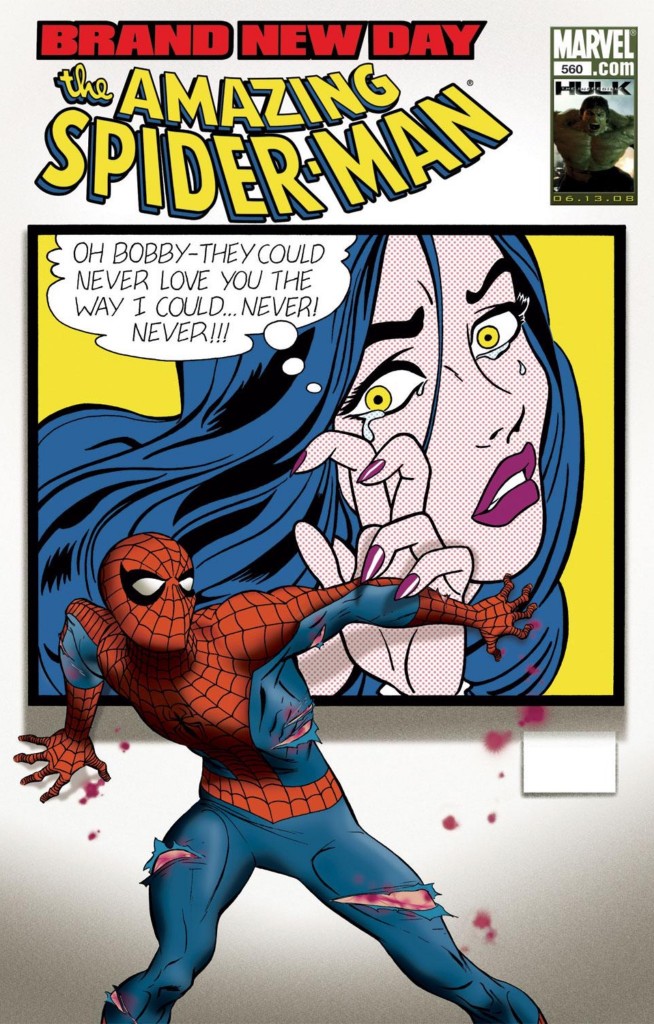
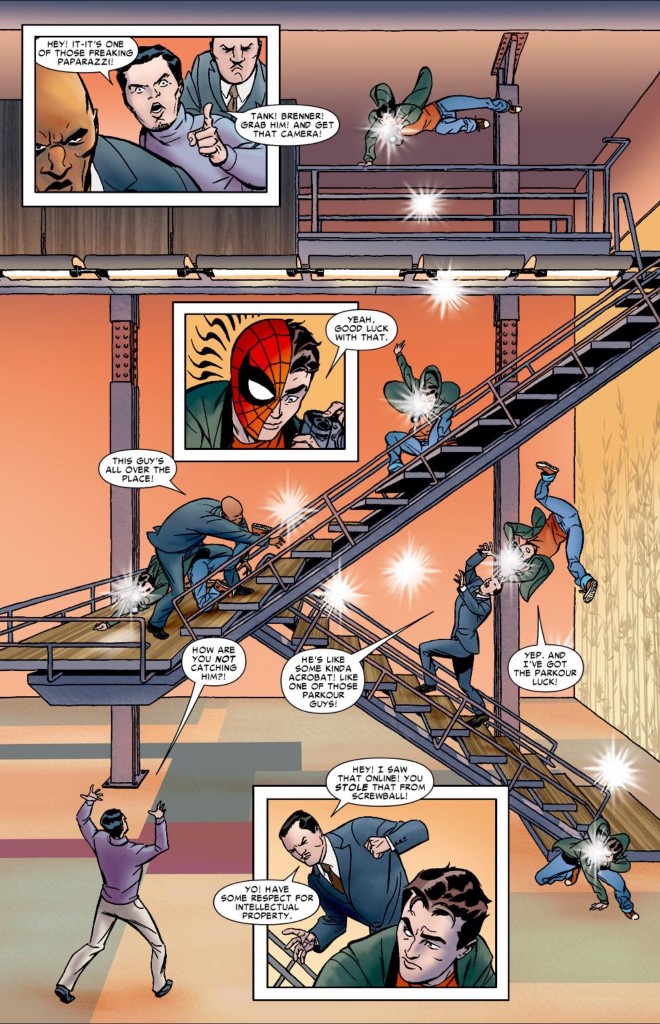
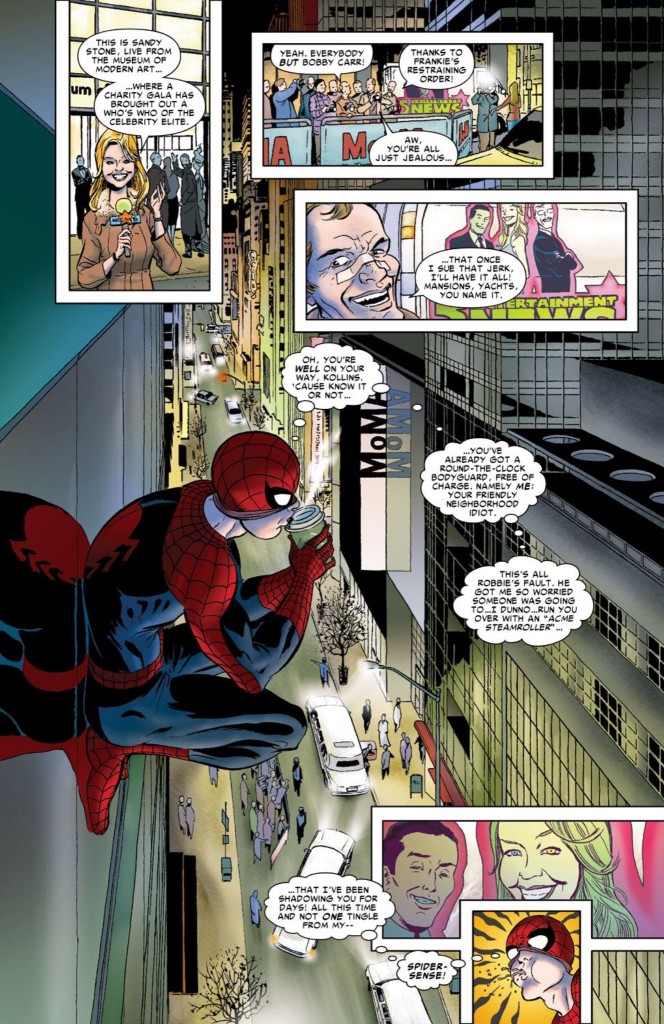
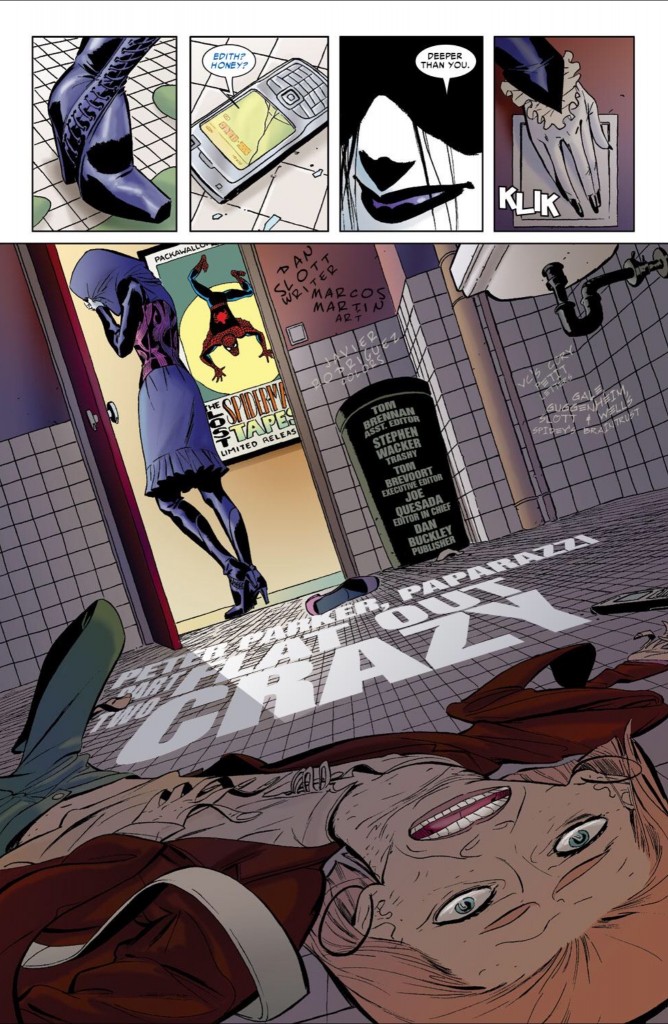
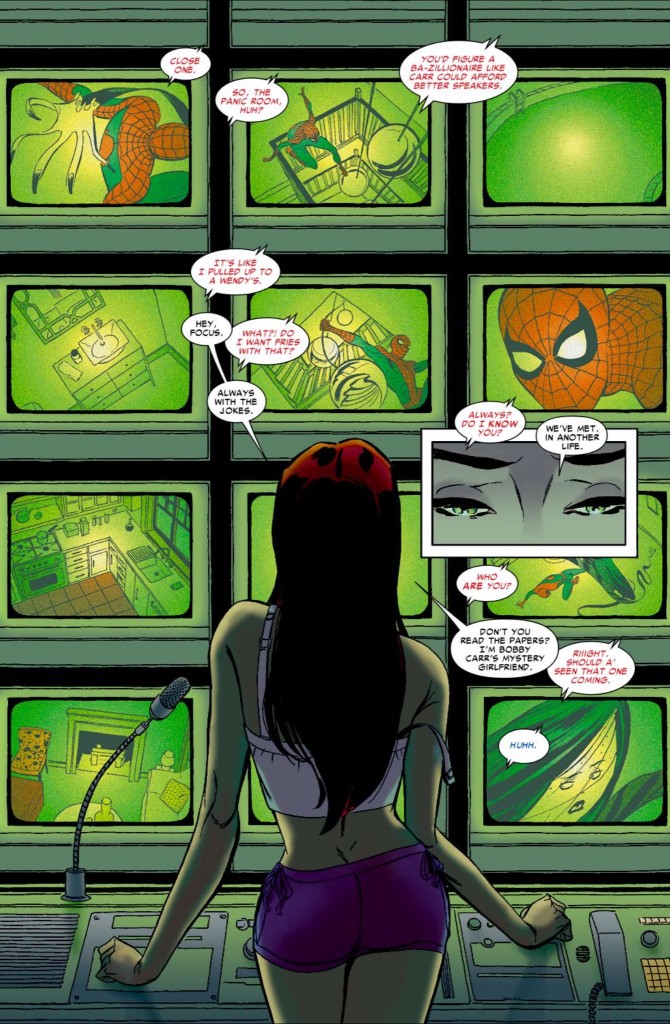

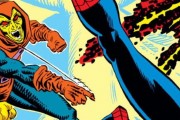


Yes, Peter should be fallible. He makes mistakes, and he learns from them.
Fun story, incredible art. Marcos Martin was born to draw Spider-Man.
In the Venom: Dark Origins mini, (a good read if you’ve skipped it), Eddie Brock, upon realizing that Peter is supporting himself by taking pictures of himself as Spider-Man, becomes even more outraged, that Brock is called a liar while Peter is an award-winning photojournalist. Obviously, Brock’s situation is different and his POV is terribly skewed, but it does bring up the legitimate fact that there are ethical lines Peter already dances around when it comes to his craft.
Additionally, I really don’t see Pete as the kind of guy who gave the paparazzi or celebrity journalism any thought at all prior to the offer being made to him. If anything, it’s simple for him to make the comparison to his own situation as Spider-Man, where the photos he takes do show him doing good, even if Jonah’s yellow journalism try to spin his actions in a bad light. His own experiences nudge him towards a different attitude regarding the paparazzi phenomenon that that average person.
For those reasons, as well as Peter’s own personality and history of making somewhat short-sighted decisions when he’s in a bind, I totally bought his characterization in this arc. And really, it’s pretty obvious to the reader that he’s struggling with and having to convince himself of the ethics of his actions through the whole story. It makes it more satisfying when he finally does turn around on the situation, because we understand what he went through to get there.
Also, Paper Doll is a wonderfully creepy villain and needs to show up more often.
These posts keep reminding me how much I generally enjoyed Brand New Day and make me want to reread it so I can experience it again. Maybe when I get through my stack of ASM back issues I’ll make time to do that.
Couldn’t wait to hear your take on this story. This is probably my most memorable arc of early Brand New Day. Haven’t read it in some years but the art really, really stayed with me. Really wish Martin was still doing Spider-Man. He is amazing. Those covers are incredible, too.
Not a bad article review here. I avoided Spidey like the plague during this period, but also pre-OND too, but the point is, I may have to go seek this arc out. Peter doing the whole TMZ thing isn’t that much of a stretch as you say. Shit if it was around when he was first starting out taking pics to make money to pay for his Aunt May’s meds, I can definitely see him doing this, if only for a short while. In the end, his moral compass would steer him away from this side of “journalism”, and he’d do something else to make that same $.
Bt yeah, why this idea hadn’t already been talked about before is kind of head-scratching considering his profession is an automatic in to this type of job.